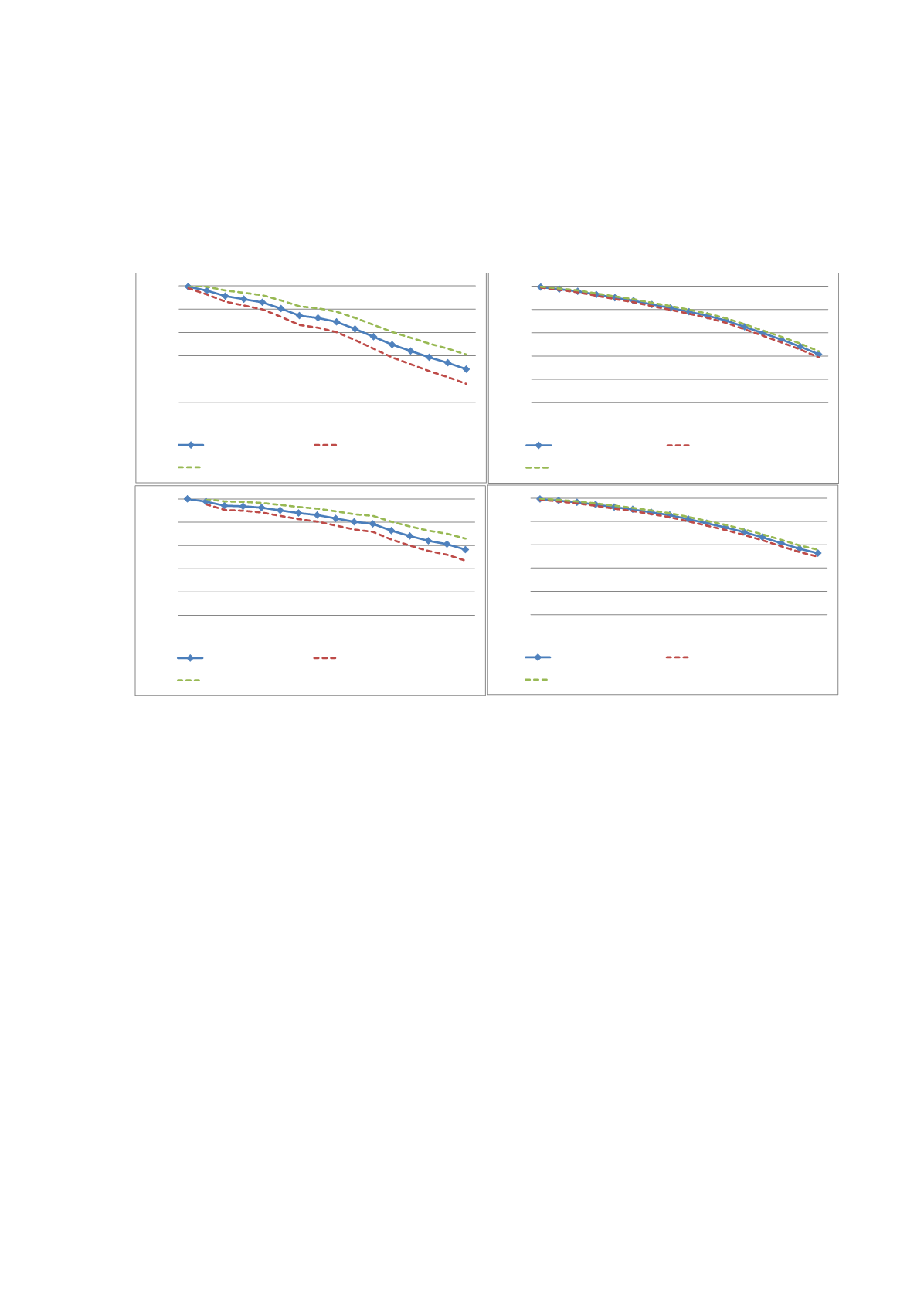
24
There is also an indication that the increase is greater among the military employees in
relation to other civil servants. A rough estimate of the double difference yields an
increase of about 4 percentage points in the survival rate.
Figure 9: Kaplan-Meier estimates of the survival function, calculated by group
shows the results from estimated Cox regression models, in the form of hazard
ratios. The first thing to note is that the results are robust to the inclusion of control
variables. The risk of dying, up to age 70, is reduced by approximately 26 percent ((1-
0.7424)*100) by the reform. The effect is larger when censoring the survival time at age
66.
All in all, the results from the Cox regression models suggest that, if anything, the
above estimates for the number of days in inpatient care are biased toward zero. That is,
by not censoring individuals who died within the age span studied, we are potentially
underestimating the effect of the early retirement offer on the number of days in
inpatient care.
0.75
0.8
0.85
0.9
0.95
1
54 55 56 57 58 59 60 61 62 63 64 65 66 67 68 69
Non-mil. 1931-1932 Non-mil. -2*se
Non-mil. +2*se
0.75
0.8
0.85
0.9
0.95
1
54 55 56 57 58 59 60 61 62 63 64 65 66 67 68 69
Non-mil. 1938-1939 Non-mil. -2*se
Non-mil. +2*se
0.75
0.8
0.85
0.9
0.95
1
54 55 56 57 58 59 60 61 62 63 64 65 66 67 68 69
Military 1931-1932 Military -2*se
Military +2*se
0.75
0.8
0.85
0.9
0.95
1
54 55 56 57 58 59 60 61 62 63 64 65 66 67 68 69
Military 1938-1939 Military -2*se
Military +2*se


